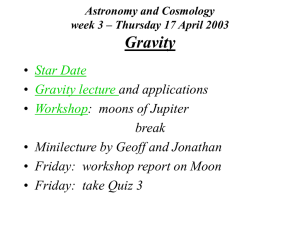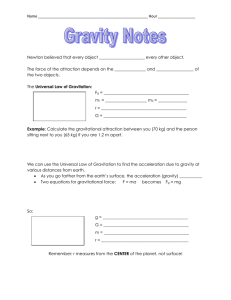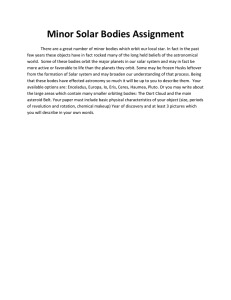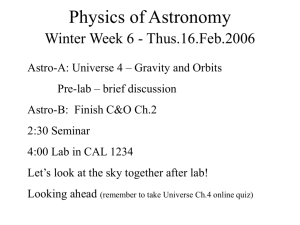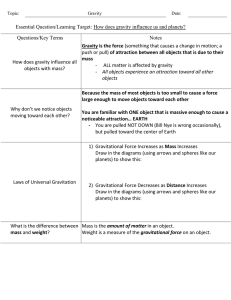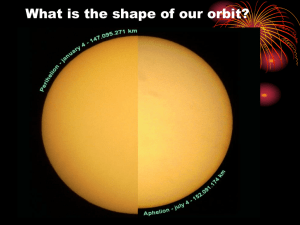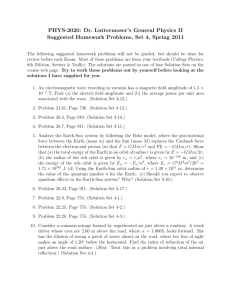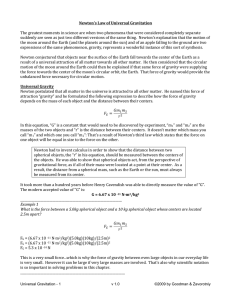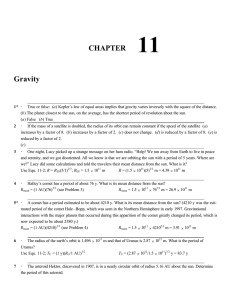Gravity
advertisement
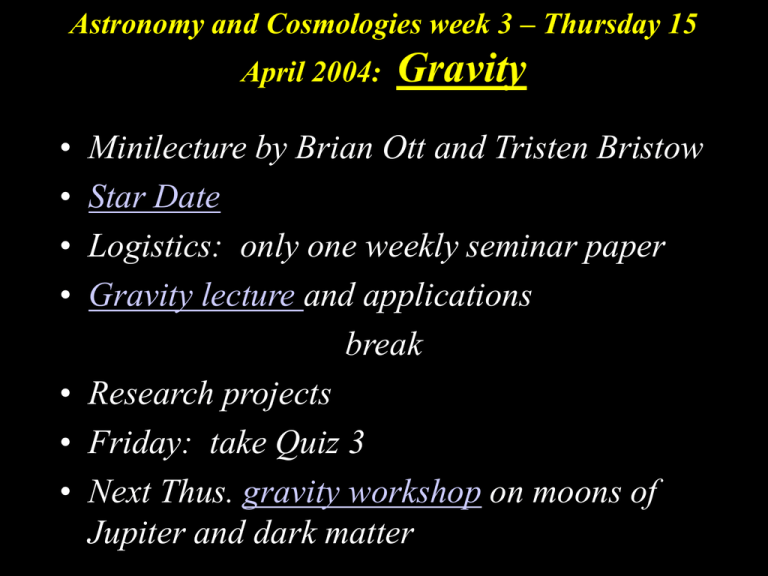
Astronomy and Cosmologies week 3 – Thursday 15 April 2004: • • • • Gravity Minilecture by Brian Ott and Tristen Bristow Star Date Logistics: only one weekly seminar paper Gravity lecture and applications break • Research projects • Friday: take Quiz 3 • Next Thus. gravity workshop on moons of Jupiter and dark matter Guiding Questions 1. How did ancient astronomers explain the motions of the planets? 2. Why did Copernicus think that the Earth and the other planets revolved around the Sun? 3. What did Galileo see in his telescope that confirmed that planets orbit the Sun? 4. How did Tycho Brahe attempt to test the ideas of Copernicus? 5. What paths do the planets follow as they move around the Sun? 6. What fundamental laws of nature explain the motions of objects on Earth as well as the motions of the planets? 7. Why don’t the planets fall into the Sun? 8. What keeps the same face of the Moon always pointed toward the Earth? Derive Kepler’s 3d law from Newton’s second law: F=ma Gravitational force F=GmM/r2 acceleration in circular orbit a = v2/r Solve for v2: Speed v = distance/time = 2pr/T. Plug this into v2 and solve for T2: This is Kepler’s third law: T = period and r = orbit radius. Use Kepler’s 3d law to find the mass of the Sun: 2 4 p Algebraically (no numbers yet), solve T 2 =r 3 GM for M=____________________ G = universal gravitational constant r = radius of Earth’s orbit about Sun = ________ km = ________ m T = period of Earth’s orbit = ____yrs =________sec Knowing Earth’s orbit radius and period, you can solve for the Sun’s mass M = For objects orbiting the Sun, Kepler’s law simplifies to a3 = p2, where a=radius in AU and p=period in years A satellite is placed in a circular orbit around the Sun, orbiting the Sun once every 10 months. How far is the satellite from the Sun? 2 10 a = p = _______ 12 3 2 a ______ Sidereal and Synodic periods: A satellite is placed in a circular orbit around the Sun, orbiting the Sun once every 10 months. How often does the satellite pass between the Earth and the Sun? 1 1 1 sidereal period Earth ' s sidereal year synodic period 1 1 1 P E S 1 1 1 10 1 S 12 1 ________________ S S ________________ We can use Newton’s gravity to approximate the size of a black hole! Knowing the gravitational force between two bodies m and M, we can find their gravitational energy: Energy Force * distance GmM Egrav * r ________ 2 r In order for an object (say, m) to escape M’s gravity, It needs sufficient kinetic energy K=1/2 mv2 … Use energy conservation to find the size of R of a black hole: Gravitational energy kinetic energy GmM 1 2 mv r 2 Solve for r ____________ Not even light can escape (v=c) if it is closer than r to a black hole. This is the Schwarzschild radius: R(for v=c) =_____________________
